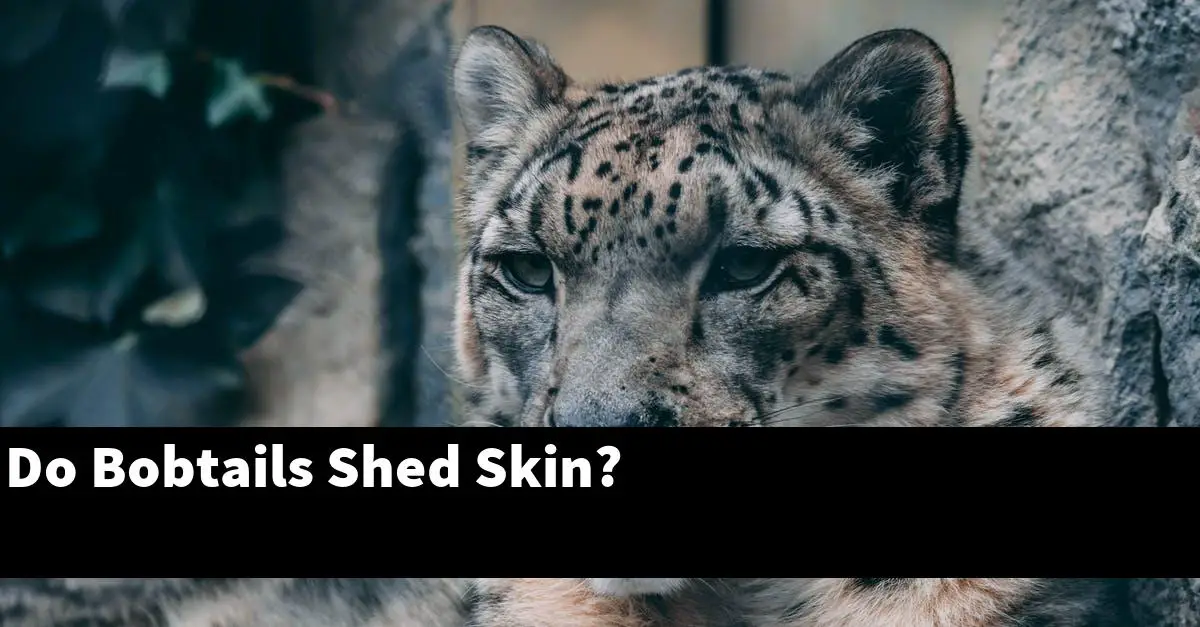The bobtail is a domesticated cat with a naturally short tail. Although the exact origins of the bobtail are unknown, the breed is thought to have originated in Japan.
Bobtails are known for their friendly and docile nature, and they are often used as therapy cats. They are also one of the few breeds of cats that do not typically shed their skin.
Do lizards lose their skin?
Yes, lizards can lose their skin. This usually happens when a lizard is handled or when the skin is torn.
Do house lizards shed their skin?
House lizards are ectothermic reptiles which means that they rely on their internal body heat to regulate their body temperature. As a house lizard grows, its body temperature becomes too high for it to maintain naturally and so it will shed its skin in order to lower its body temperature.
This process can take anywhere from a few days to a few weeks and will vary depending on the age and size of the lizard.
Do bob tails shed?
It can depend on the individual bobtail cat’s coat and grooming habits. Generally speaking, bobtails may shed less than other cat breeds because they have shorter hair.
If your cat is typically groomed regularly and has a tidy coat, there is no reason to worry about excessive shedding. However, if your cat is not regularly groomed or has a less-kempt coat, there is a chance that they may shed.
What happens when lizards shed their skin?
When a lizard sheds its skin, the new skin grows over the old one. The new skin is a few millimeters thick and is covered in tiny, hard scales.
The lizard’s new skin is very sensitive and can easily be injured. The lizard’s old skin is gradually removed by the new one and falls off in clumps.
Does shedding hurt lizards?
Yes, shedding can cause pain and discomfort to lizards. Sweating and the release of skin cells can cause skin irritation and even infection.
In extreme cases, shedding can even lead to a loss of body mass and a decrease in overall health.
Do lizards shed scales?
Yes, lizards do shed their scales regularly. The scales are replaced by new ones as they grow and wear down.
What happens if a house lizard bites you?
If a house lizard bites you, the lizard’s saliva may contain toxins that can cause an allergic reaction. The reaction may cause hives, a rash, and even swelling.
If the bite does not cause any immediate symptoms, the person may experience a delayed reaction, such as a headache, fever, and nausea. If the bite does cause symptoms, the person should go to a hospital or doctor.
Are house lizards harmful?
House lizards are not harmful to humans. They are beneficial because they keep the area around the house clean and they eat insects.
How do you know if a lizard is dying?
When a lizard is in distress, it will display a number of abnormal behaviors. This includes hiding, refusing to eat or drink, panting excessively, and having a decreased activity level.
In some cases, a lizard may even exhibit noticeable swelling. If you are able to observe these signs in your lizard on a regular basis and they continue to worsen, it is likely that your lizard is dying.
Can you keep bobtails as pets?
There are pros and cons to keeping bobtails as pets. The pros include their cute, cuddly nature, their playful nature, and their intelligence.
The cons include the fact that they can be difficult to housetrain and require a lot of attention and care.
How can you tell the difference between male and female Bobtails?
There are a few key physical differences between male and female Bobtails that can help identify them. Male Bobtails have a longer tail than females, and they also have a more defined crest on their head.
Female Bobtails also have smaller tails and less pronounced crests. Additionally, males typically have a brighter red color than females, and they often have more extensive markings on their body.
How can you tell if a bobtail is male or female?
In general, bobtails are typically male, as their tails are shorter than those of females. However, there are a few exceptions to this rule, and some bobtails may have female-like tails.
If you are unsure whether a bobtail is male or female, you can ask the animal’s owner.
Conclusion
Bobtail lizards are known to shed their skin on a regular basis as part of their natural molting process. In the wild, these lizards typically shed their skin every 4-6 weeks, but captive bobtails may shed more frequently due to the stress of captivity.
Shedding helps the lizard get rid of any parasites or other unwanted hitchhikers, and it also allows the lizard to grow new skin that is free of any damage or scars.

